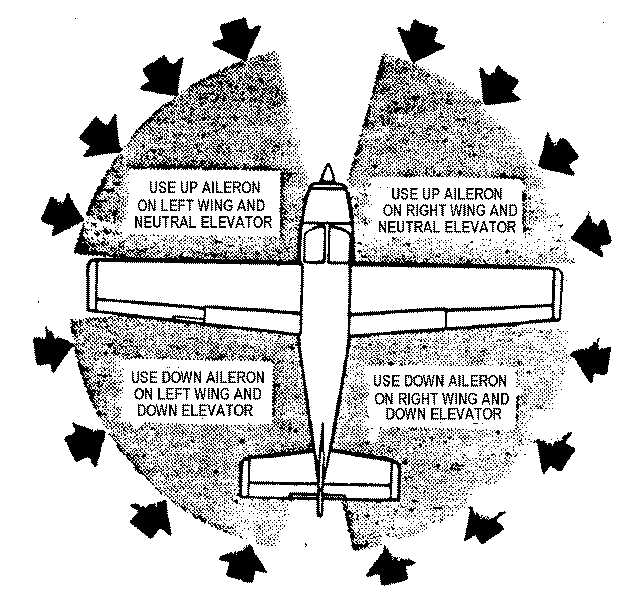It is critical for a pilot to account for the wind during all phases of a flight. Taxiing on the ground is no exception. The main idea of wind correction by aileron deflection is to prevent the wind from “picking up” a wing or the tail and turning the airplane over as the pilot is taxiing around. You will be expected to show proper aileron deflection during your checkride. More importantly, however, following proper wind correction techniques will help prevent accidents and incidents both in the air and on the ground!
On Hard-Surface Runways
Quartering Headwind from the Left: Turn your aileron into the wind-in other words, turn your yoke left-and keep your elevator in the neutral position.
Quartering Headwind from the Right: Turn your aileron into the wind-in other words, turn your yoke right-and keep your elevator in the neutral position.
Quartering Tailwind from the Left: Turn your aileron out of the wind-in other words, turn your yoke right-and push your elevator in the down position.
Quartering Tailwind from the Right: Turn your aileron out of the wind-in other words, turn your yoke left-and push your elevator in the down position.
On Grass Runways
On “soft field” runways, your aileron deflection will remain the same as above. However, because it is a soft field, you will NOT push your elevator in the down position, even with a tailwind. On grass strips, you are to keep your elevator in the FULL BACK position at any time while taxiing, with your ailerons set as required.. If you have a very strong tailwind you may put the elevator in the neutral position, but never in the down position.

